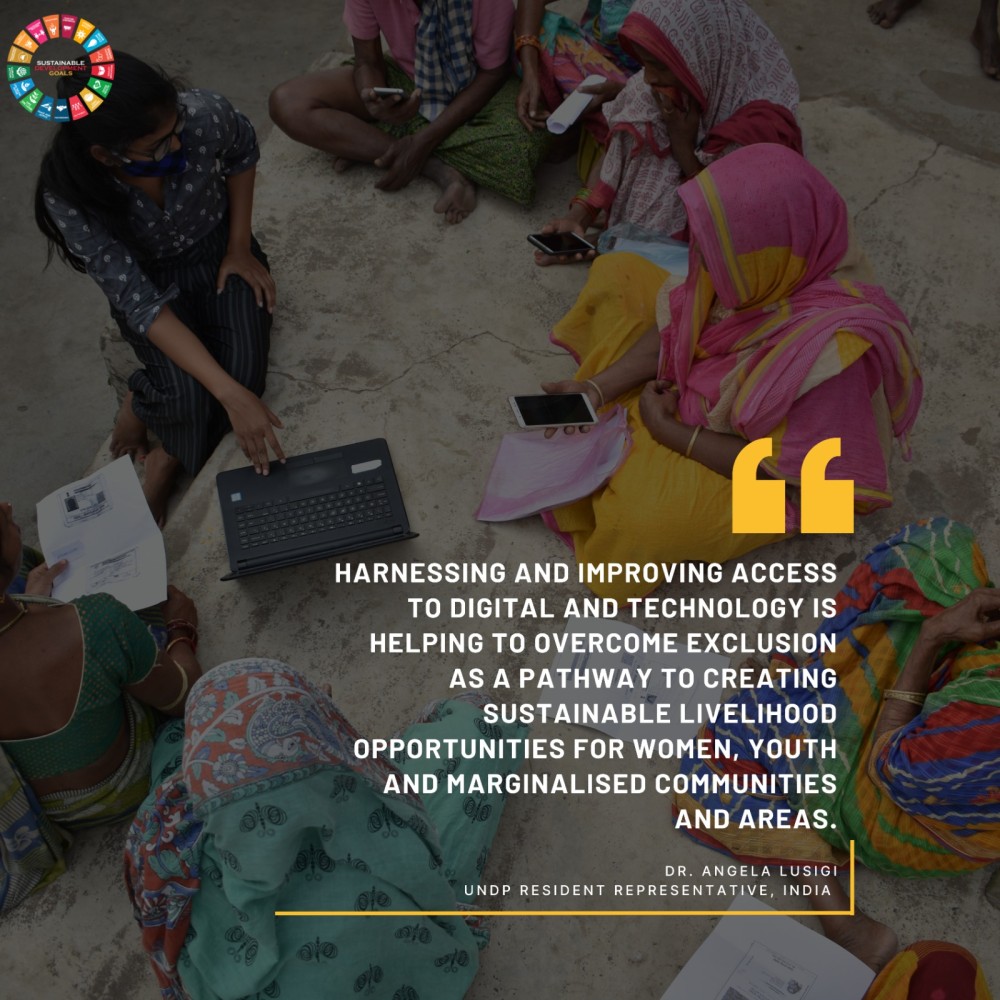Angela Lusigi, Resident Representative at UNDP India
Going for gold for SDGs by 2030
August 13, 2024

Utthaan Ghazipur
With the Olympics in full swing, we celebrate all athletes and nations as they compete for the ultimate prize. Achieving their goals will be the result of years of preparation and steady progress. In the same way, each nation is going for gold in the race to achieve the Sustainable Development Goals (SDGs) by 2030. With only 6 years left, people, communities, businesses and nations must put their best efforts forward to achieve this Agenda 2030.
We are not on track to reach the SDGs
Yet globally, only 17% of SDG targets are on track to being achieved, bold action is needed. The High-level Political Forum (HLPF) on Sustainable Development held in July in New York on ‘Reinforcing the 2030 Agenda and eradicating poverty in times of multiple crises’ was an important opportunity to showcase actions that work. For instance, India shared their experience on accelerating SDG progress through localisation and the innovative State SDG Index supported by UNDP and the UN in India.
Key lessons from India’s SDG acceleration
In order to accelerate progress on SDGs the world needs a new international consensus on how to deliver a better present and safeguard the future. The Summit of the future coming up in September aims to accelerate our efforts to meet existing international commitments while responding to emerging threats and opportunities. Three key takeaways from India’s experience in accelerating SDG progress supported by UNDP could help inform the road to the Summit of the Future.
- Build capabilities for SDG localisation
First, strengthen systems and institutional capabilities for SDG localisation to accelerate progress. By enhancing SDG monitoring and evidence-based planning at sub-national level, states and union territories in India are now better able to prioritise integrated solutions for SDG acceleration and enhanced service delivery. India is using localised SDG data for monitoring and tracking SDG progress across all states and union territories while targeting aspirational states and lagging SDGs for additional attention. Special attention to health systems strengthening at subnational level is yielding significant dividends including the innovative U-WIN system that is advancing health for all.

Assam
- Scale interventions to reach the farthest behind first
Second, scale interventions to reach the farthest behind first using digitalisation and innovation. This helps to advance inclusion, sustainable livelihoods and social protection. From placing climate smart agriculture solutions in the hands of farmers and expanding digital access to agricultural credit and insurance, to digital identities for marginalised and vulnerable communities to facilitate access to social services. Harnessing and improving access to digital and technology is helping to overcome exclusion as a pathway to creating sustainable livelihood opportunities for women, youth and marginalised communities and areas.

Cuttack, Odisha
- Invest in resilient communities
Finally, invest in marginalised and vulnerable communities to build climate resilience and restore ecosystems. Safeguarding nature-based livelihoods both now and into the future requires significant investment by public and private actors in community based natural resource management. There are excellent examples of empowered communities who are effectively managing forests, wetlands and coastal landscapes. Supporting community based natural resource management and protecting rights is a cost-effective way to uplift communities that depend on natural resources for their livelihoods. It also contributes to climate action.
At the HLPF, the experience of tribal communities in Rajasthan showed how these communities are engaged in promoting sustainability and resilience through crop diversity and climate resilience. Defending the rights of the communities who are custodians of our natural wealth and protecting their farming systems, livelihoods and habitats fosters sustainable development solutions that address poverty and inequality.

Engage in the Summit of the Future to co-create solutions
Going for gold for the SDGs will require us to build strong local institutions, advance inclusion to reach the farthest behind and invest more in local communities. These key lessons emerging from the HLPF will be instrumental in informing the outcome of the Summit of the Future. As noted by the UN Secretary General, after decades of reductions in poverty and hunger, progress has slowed and, in some countries, gone into reverse. And this is fueling resentment and anger. We still have a chance to engage in the Summit of the Future to co-create solutions, inspire action and ramp up investment that will get our world back on track to safety, to prosperity, and peace.


 Locations
Locations
